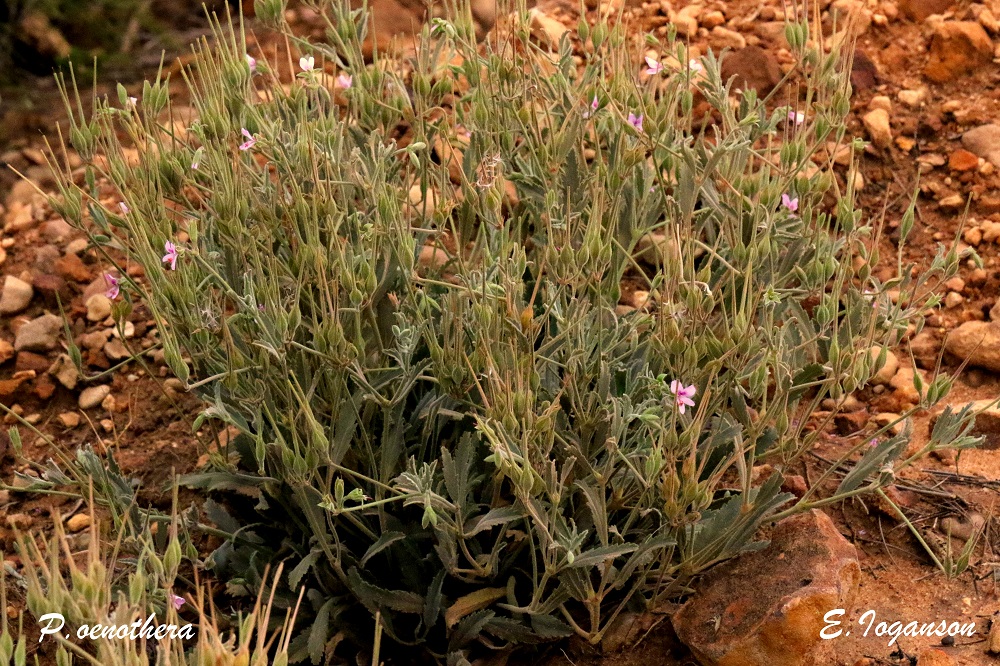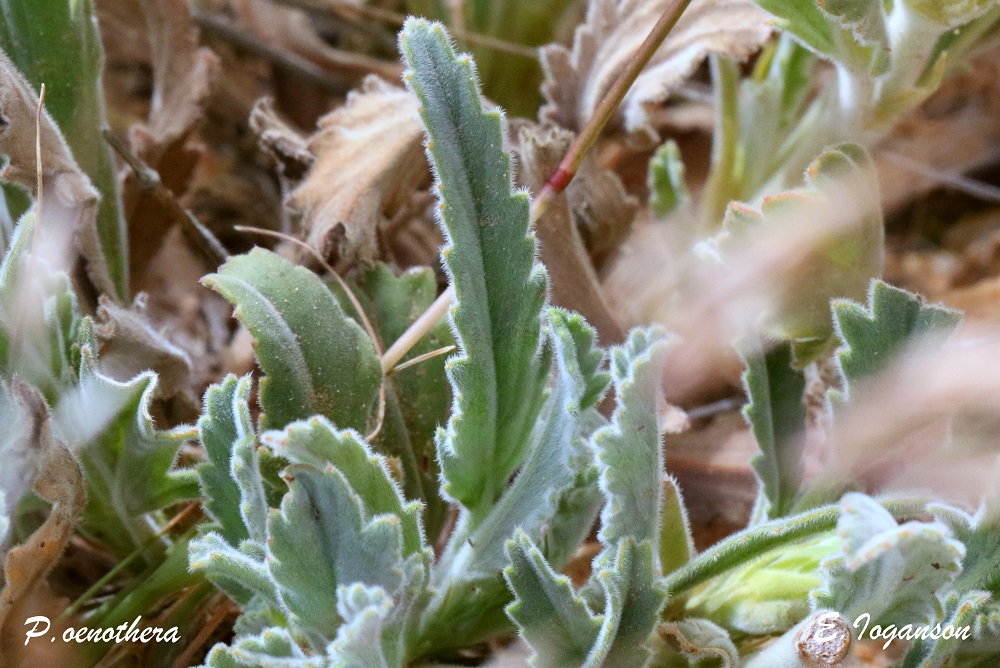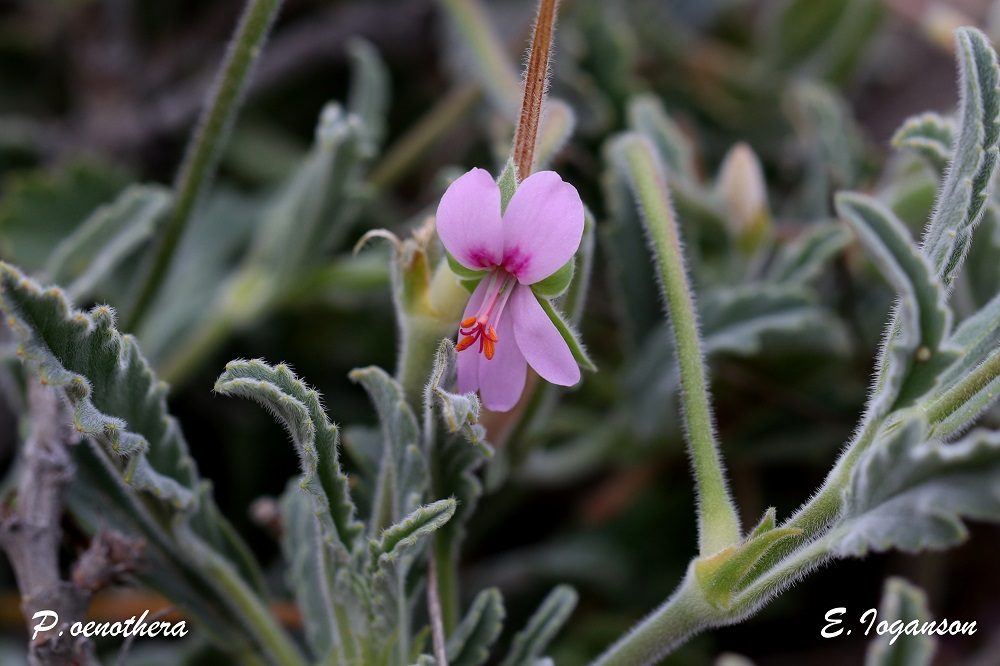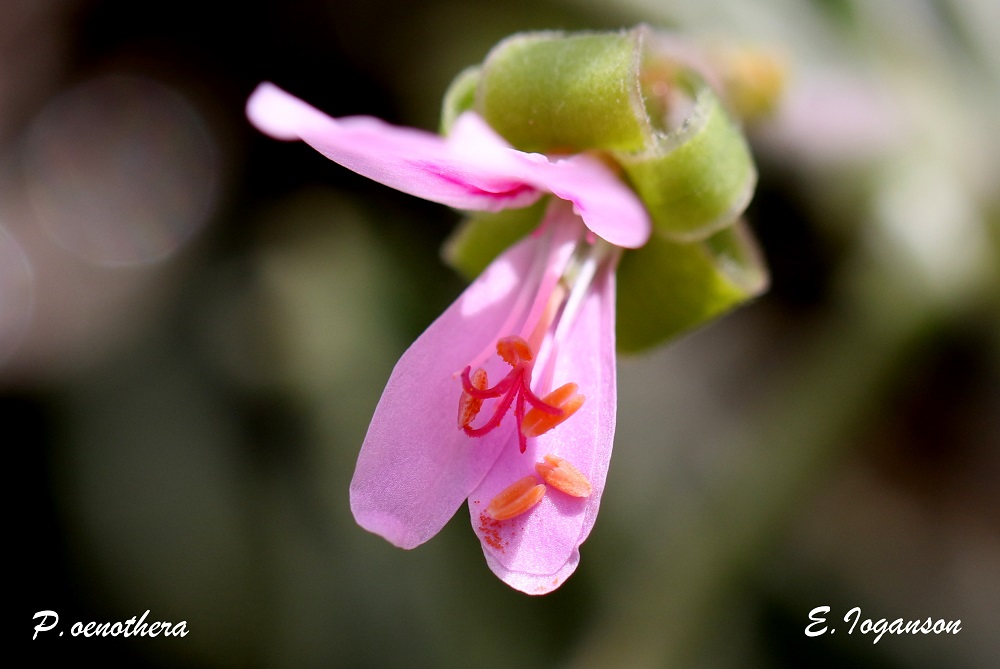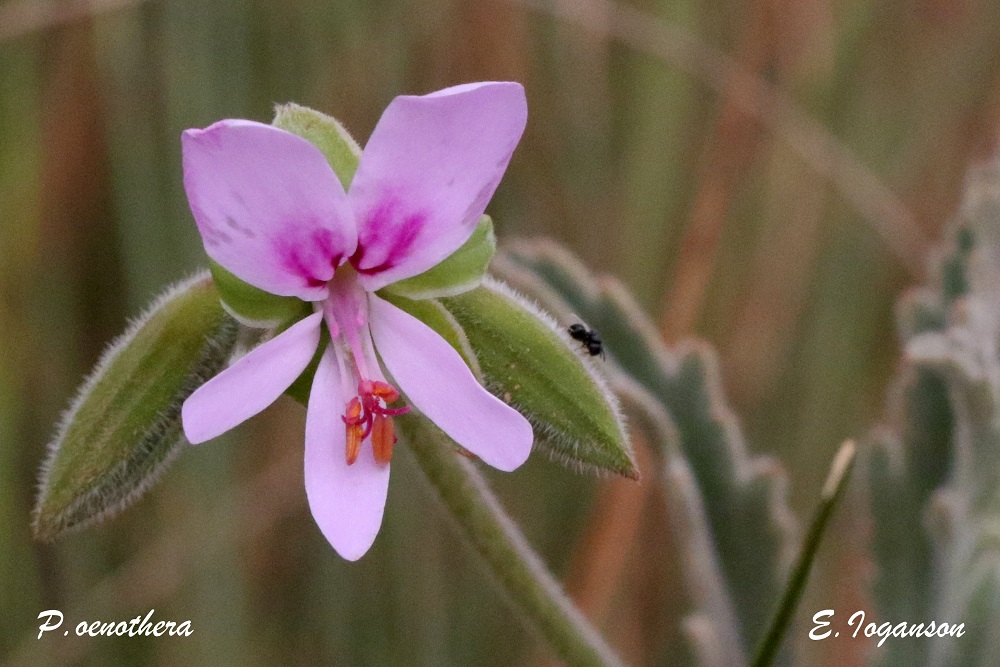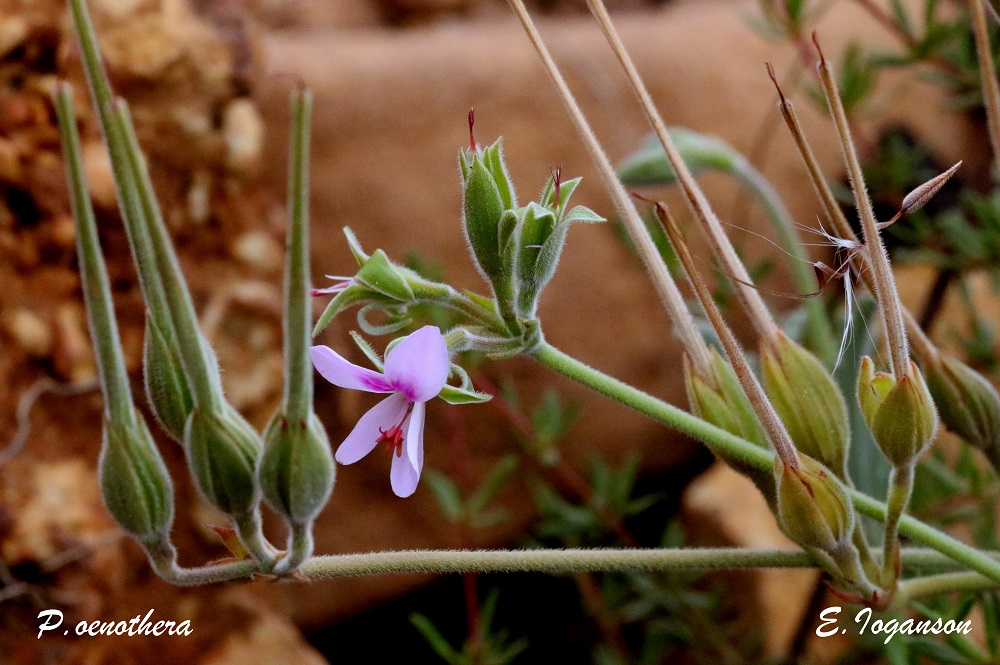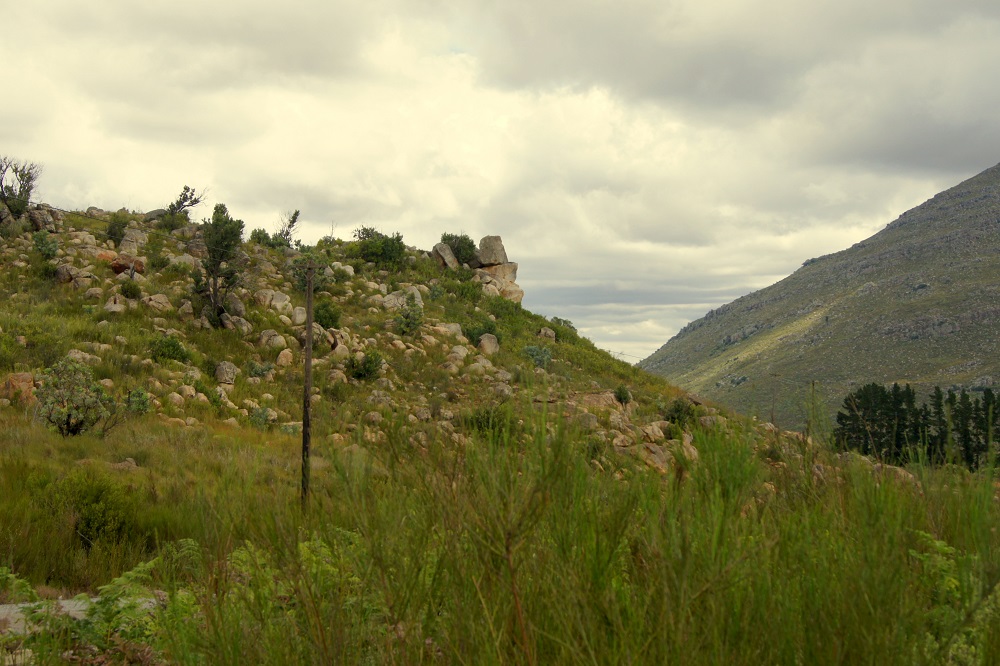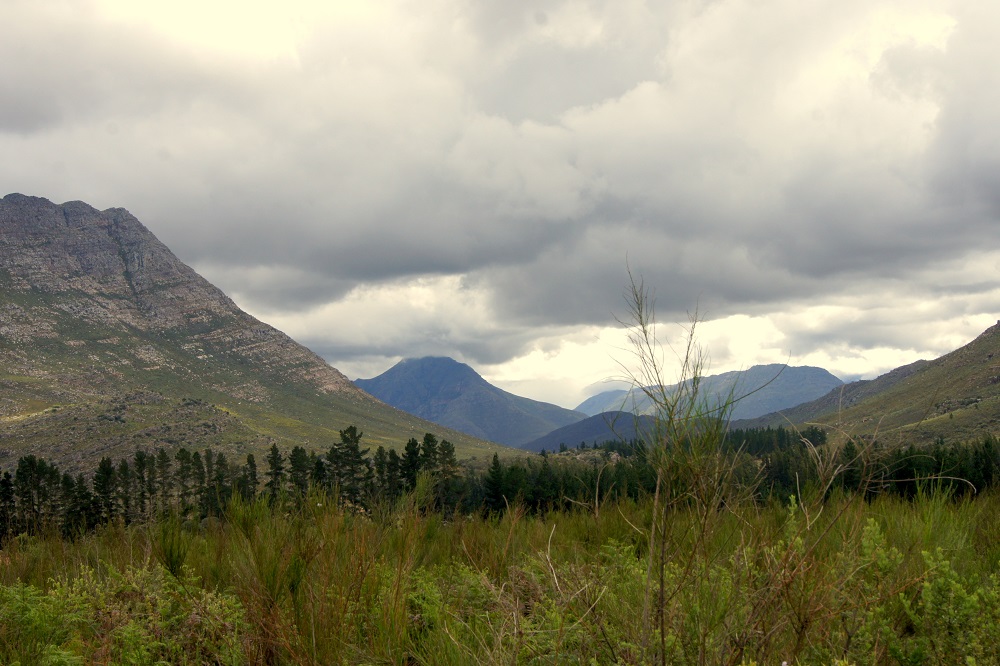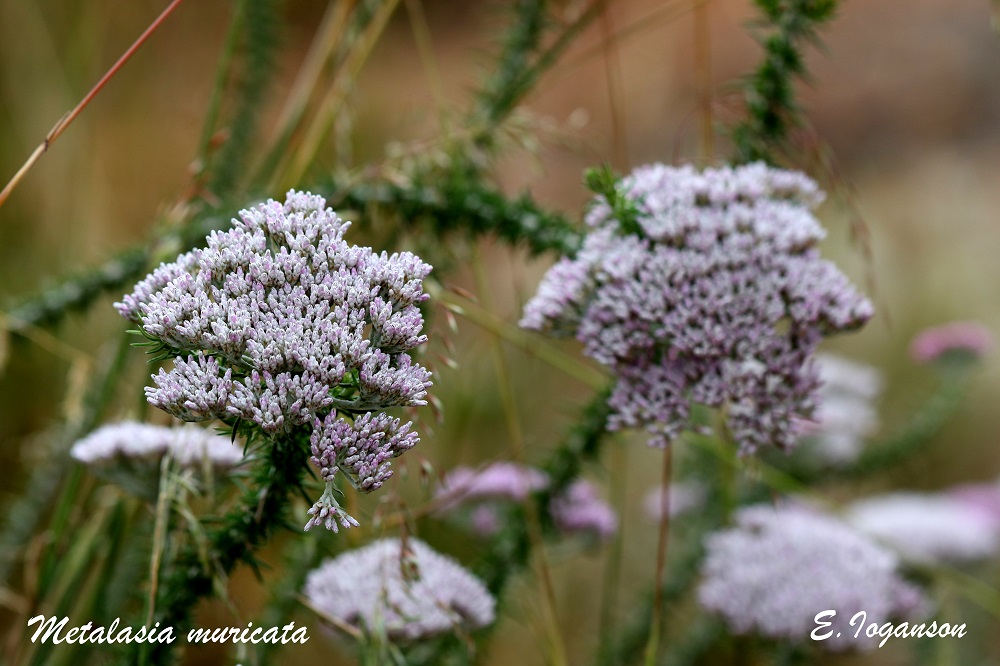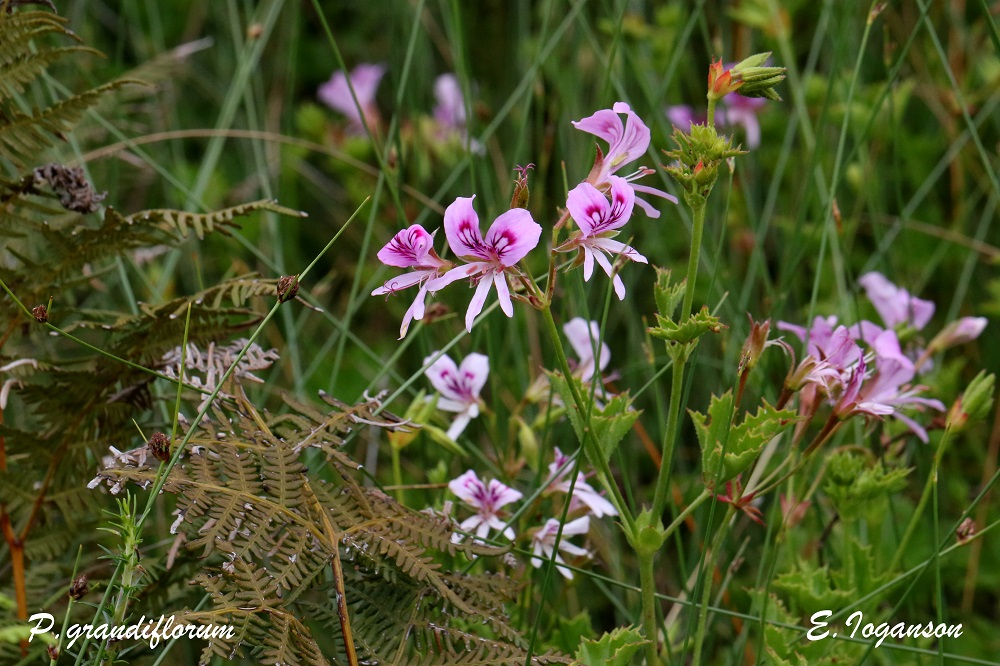P. oenothera
РусскийPelargonium oenothera (L.f) Jacq., Icones Plantarum Rariorum 3, 3:9, t. 523 (1789)
genus: Pelargonium L'Heritier
subgenus: Pelargonium L'Heritier
section: Campylia De Candolle
synonim: Geranium oenothera L. f.
Erect to decumbent, solitary subshrub, up to 0,3 m high. Stems: tomentose with glandular hairs in between. Leaves: indumentum as on stems, glaucous; lamina flat, lanceolate, oblong or oblanceolate, base cuneate, apex obtuse, margin irregularly serrate along entire length, (17-)32 –45(-75) x (5-)7 – 9(-13) mm; petiole shorter than lamina, (7-)15 – 20(-33) mm long; stipules narrowly triangular, acuminate, 5-10 x 1-3 mm. Inflorescence: peduncle 30-100 mm long, tomentose with glandular hairs in between; pseudoumbels 1– 4-flowered. Pedicel: 2 – 4 mm long. Hypanthium: 2 – 3 mm long, indumentum on pedicel, hypanthium and sepals abaxially as on peduncles. Sepals: elliptic, acute, green, 8-12 x 2- 4 mm. Petals: 5, pink to pale purple, obovate, with short claws; posterior two with darker markings, 8-11 x 3-5 mrn; anterior three 6-9 x 2-3 mrn. Fertile stamens: 5 (4 long, 1 short), staminodes sometimes pilose and two slightly reflexed, staminal column ca. 3 mm long, pollen yellow. Mericarps: bases 7-8 mm long; tails 45-48 mm long. Chromosome number 2n=20
P. oenothera in habitat. Cederberg area, Citrusdal, Western Cape, South Africa. Photos by E.Ioganson
One of the places of P. oenothera growth - Cederberg area, Citrusdal, Western Cape, South Africa. Some plants sharing a habitat - Metalasia muricata, Pelargonium grandiflorum. Photos by E. Ioganson
Diagnostic features
Solitary subshrub. Laminae flat, tomentose, glaucous, longer than petiole. Pseudo-umbels 1 - 4-flowered. Petals 5, posterior two not auricled. Fertile stamens 5.
Geographical distribution and ecology
P. oenothera is confined to the south-western corner of the Cape Province, occurring from Clanwilliam in the north to Franschhoek in the south. It grows on sandy coastal flats as well as on the rocky foothills of the mountain chains. It has even been collected on high mountains at altitudes of up to 1500 m above sea level. It is found in low fynbos on sand or sandstone. The annual rainfall varies from between 200 mrn near the coast to perhaps as much as 600 mm at the higher altitudes, and occurs mainly during the winter months. The summers are hot and dry and the winters cool and moist to wet. Winter frost is virtually absent at the lower elevations, but at higher altitudes the plants may occasionally be covered with snow.
P. oenothera flowers in early summer, from September to December.


References
- Van der Walt, J. J. A. & L. van Zyl. 1988. A taxonomic revision of Pelargonium section Campylia (Geraniaceae). S. African J. Bot. 54(2):145-171.
- Van der Walt, J. J. A. & J. P. Roux. 1991. Taxonomy and phylogeny of Pelargonium section Campylia (Geraniaceae). S. African J. Bot. 57(5):291-293.

























